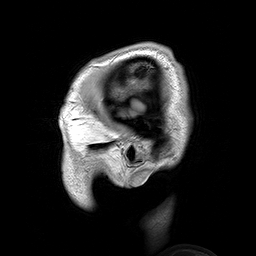What do clinicians come to know about their patient’s heart sensations? This is not a simple question, as it simultaneously looks at patients as people with bodily experiences, but also as humans understood as systems, as a sort of living machine. What is more intimate than our heart-beating, a familiar yet mysterious sensation we know to be at the very basis of our ongoing experience? Feeling a change in the rhythm or intensity of this fundamental aspect of our embodied existence can be very worrisome. Should clinicians believe patients who complain of cardiac rhythm changes? How accurate are people at detecting medically important heart-beat fluctuations? How should clinicians understand the relationship between symptoms as reported by the patient, and underlying physiological processes? These are complex and multifaceted issues, requiring nimble clinicians who integrate scientific knowledge as well as intuition about what the patient is experiencing bodily. Clinicans develop knowledge of their own bodies through life, and then are required to learn complex anatomical, physiological, and etiological concepts they will use to interpret their patient’s symptom reports. What patients have to say about what is happening in their bodies must be taken seriously, but not necessarily believed. The interrelated problems of how clinicians interpret patient verbal reports, reason about the relation between these reports compared to measurements and scientific models, and then make judgments about the patient’s accuracy in knowing about their own bodies are topics well worth honing in on, and to my knowledge, not throughly explored from a neurophenomenological perspective.
These acts of clinician cognition concerning their patient’s symptoms are framed by an evolving social and professional context. Modern medicine, like the Roman god Janus, stands two-faced, towards healing as an art, but also towards scientific models of disease. In the current era, what is known as “evidence-based medicine” requires an important shift in how clinicians operate, from historically rather unfettered individual judgments in some contexts, to increasingly accepting consensus-developed guidelines formulated from reviews of previous findings. Clinicans who have with great effort developed the ability to intuit diagnoses may have to defend their familiar constructs, criteria, heuristics, and practices if these are not bolstered by peer-reviewed studies, randomized clinical trials, systematic reviews, Bayesian statistical approaches to clinical problem solving, meta-analysis of previous data, and effectiveness metrics. Medical organizations can mandate “best practices” of patient care, “gold standards” of cost-effectiveness for ordering certain tests, references to efficacy criteria that must be satisfied before a program of treatment is established, and more. This ongoing process is transforming medicine, requiring that the traditional art of diagnosis based on years of education and experience be integrated with operationalized definitions, committee-approved metrics, and greater formalization, thus constraining individual opinion and practices in favor of organization-mandated standard operating procedures. Can symptoms based on an individual’s embodied experience be given proper attention in this brave new world of medicine?
I hope that more researchers would address the clinical aspects of neurophenomenology. This is a relatively new and undeveloped area. While William James and Erwin Straus were clinicians, as is Antonio Damasio, other pioneers such as Maurice Merleau-Ponty and Francisco Varela backgrounded medical concerns somewhat (however, if you are unaware of Varela’s haunting work at the end of his life “Intimate Distances -Fragments for a Phenomenology of Organ Transplantation“, it is a must-read.) Shawn Gallagher has made an excellent synthesis of philosophy and clinical studies in “How the Body Shapes the Mind“, a work that bears greater attention from the small community of neurophenomenology researchers.
For my part, I shall focus in on a particular area, palpitations, where changes towards operationalizing and standardizing the definition of “clinically significant” symptoms are occurring, with the aim of modeling the relationship between patient symptom reports and “significant” arrhythmias as revealed on ECG measurements. I will especially focus on how the predictive utility and accuracy of the reports can be operationalized, and attempt to represent for one domain how patients’ verbalization of their phenomenological state can be “mapped” onto measurements of cardiac rhythm abnormalities.

